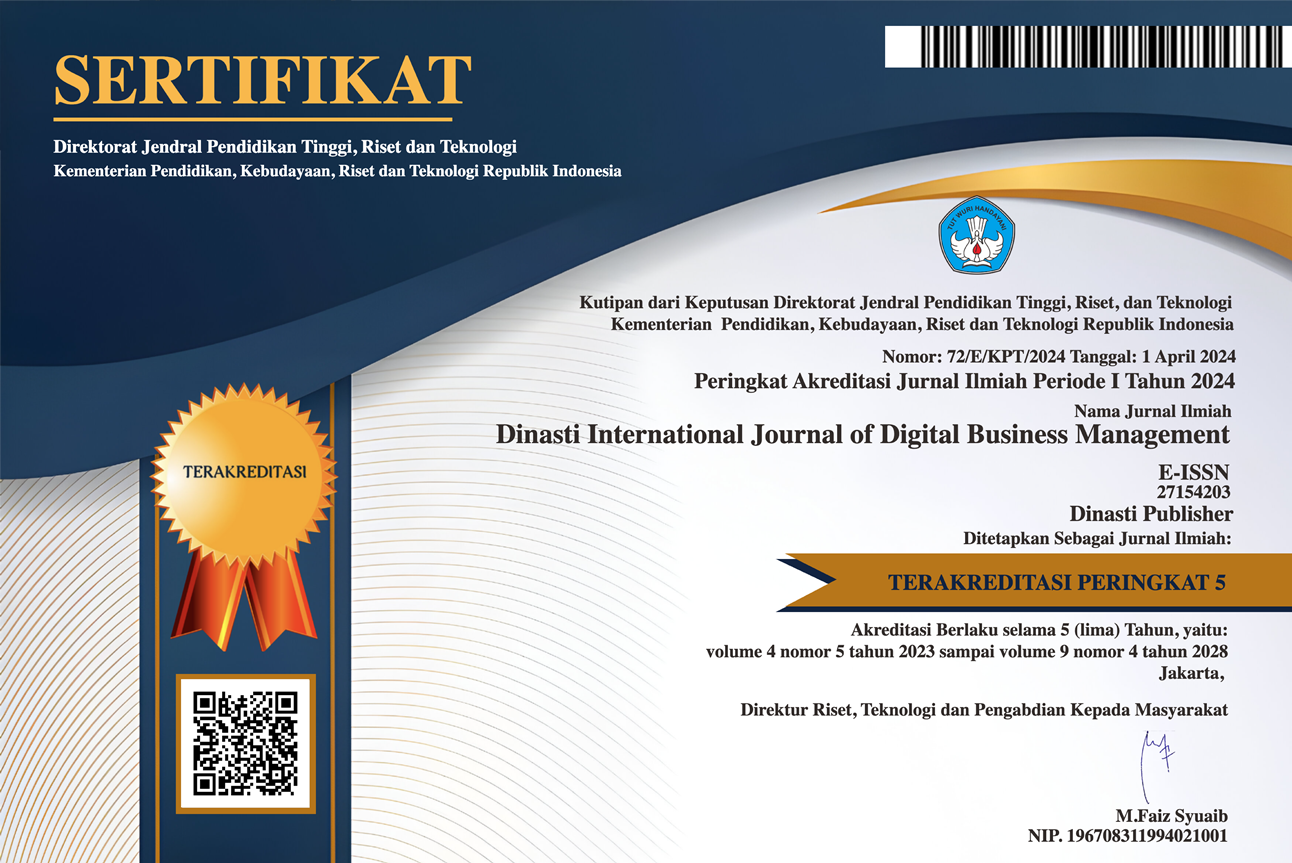Heavy Equipment Marketing Strategy Analysis With Product Life Cycle (PLC) Approach
DOI:
https://doi.org/10.38035/dijdbm.v5i6.3546Keywords:
Marketing Strategy, Marketing, Product Life Cycle, Heavy EquipmentAbstract
Heavy Equipment business in Indonesia is quite potential considering the Indonesian government is implementing various development programs in various regions of Indonesia such as the construction of the Woosh Jakarta-Bandung fast train line, the Jakarta-Cikampek elevated toll road, the construction of infrastructure in various other regions of Indonesia, and buildings for public facilities. To maintain a sustainable competitive advantage in a situation like this, there is an approach that must be used. If the company has the technological capability and the ability to adapt to resources, the company can achieve this goal. The purpose of this study is to determine how important the concept of Product Life Cycle (PLC) is in marketing strategy. The method used in this paper is a literature study, namely by reviewing reading sources related to the concept of marketing strategy through the Product Life Cycle approach. Based on the results of several literature studies, it states that a company will generally have better capabilities than its competitors' performance if it is able to apply the Product Life Cycle concept. It can be concluded that the Heavy Equipment marketing strategy through the Product Life Cycle approach that needs to be improved is Product, Price, Place and Promotion can be utilized in the context of the product life cycle concept. At the maturity stage, the recommended marketing strategy is to differentiate services to differentiate yourself from competitors. Develop new markets to expand reach. Conduct more aggressive market penetration to maintain market share. Increase effective marketing promotions and communications.
References
e-Chapter_Management and Marketing Strategy in Business 2020. (nd).
MARKETING MANAGEMENT OF CV. EUREKA MEDIA AKSARA PUBLISHER.
Kamthe, M., & Singh Verma, D. (nd). Product Life Cycle and Marketing Management Strategies. www.ijert.org
Laurensia Damanik, N., & Samsudin, A. (2023). Business Development Strategy Based On Product Life Cycle (PLC) (Analysis and Boston Consulting Group (BCG) matrix (Study On Julius Cosmetic Business Pasar Parluasan Pematangsiantar) Product Life Cycle (PLC) And Boston Consulting Group (BCG) Matrix (Study On Julius Cosmetic Business Pasar Parluasan Pematangsiantar). In Management Studies and Entrepreneurship Journal (Vol. 4, Issue 3). http://journal.yrpipku.com/index.php/msej
New-product development and product life-cycle strategies. (nd).
Pritantiwi, S., Fatimah, F., & Hermawan, H. (2023). Determination of Product Life Cycle (PLC) for Formulation of Marketing Strategy at UD. Matt Coffee Bondowoso. In Technology, and Organizational Behavior (IJBTOB) (Vol. 3, Issue 1). https://ijbtob.org
Purwanti, Y., Diana, RA, & Bisnis, A. (2024). MARKETING STRATEGY BASED ON THE PRODUCT LIFE CYCLE (PLC) CONCEPT AT WEDDING ORGANIZER (WO) SALMA WEDDING CONCEPT IN BANDUNG CITY (Vol. 08, Issue 02).
Downloads
Published
Issue
Section
License
Copyright (c) 2024 Kholidun Kholidun, Febriansyah Febriansyah

This work is licensed under a Creative Commons Attribution 4.0 International License.
Authors who publish their manuscripts in this journal agree to the following conditions:
- The copyright on each article belongs to the author(s).
- The author acknowledges that the Dinasti International Journal of Digital Business Management (DIJDBM) has the right to be the first to publish with a Creative Commons Attribution 4.0 International license (Attribution 4.0 International (CC BY 4.0).
- Authors can submit articles separately, arrange for the non-exclusive distribution of manuscripts that have been published in this journal into other versions (e.g., sent to the author's institutional repository, publication into books, etc.), by acknowledging that the manuscript has been published for the first time in the Dinasti International Journal of Digital Business Management (DIJDBM).















































